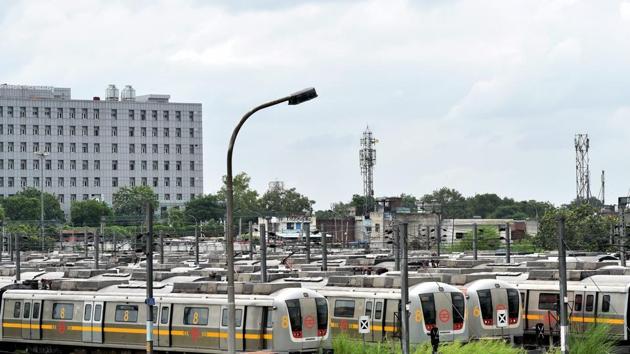Delhi Metro construction behind flooding in GK-2 basements: Study
Occupants of 15 houses and shops in blocks M, S and E in Greater Kailash-2, south Delhi, have been contending with a peculiar problem for the past few months. Their basements remain flooded even when there is no rain.

After having exhausted all options to rectify the problem in vain, the residents sought help from the Delhi Jal Board (DJB), whichc hecked its pipelines and found no leakage. The DJB then requested the Central Ground Water Board (CGWB) to look into the issue.
An interim report from the CGWB, submitted on Monday, and another from an independent scientist have found “obstructions” in the groundwater flow due to several man-made structures and the construction of Delhi Metro tunnels. A team of scientists from the CGWB had conducted a field study of the area between August 19 and 28 to table the interim report.
GK-2 residents’ welfare association had also roped in a Ranchi-based geologist to conduct a study using remote-sensing technology. Findings of both reports are similar.
Sanjay Rana, president, GK-2 RWA, said, “The reports have come and now we hope to get a solution to this problem soon. We fear that the foundation of these houses may get damaged due to the constant inundation.”
“The groundwater movement from South (Jahanpanah city forest) to Northwest (Savitri flyover) affected. The construction of Metro tunnels and basements (more than 4 metres deep) has obstructed groundwater flow line in the study area,” the CGWB report stated.
The Metro structures had come up in early 2018. “The rise in water level has gone unnoticed that year and in 2019 because till then, groundwater had not entered basements,” the report said.
The report highlights that the area reported good rainfall on August 22-23 with which the water level in the area rose by an average of 0.5 metres on August 24. “The water level on August 19 ranged between 2.5-6.5 metres below ground level (bgl). The maximum depth of basements facing seepage problem is 6 metres bgl,” the report said.
The report by geologist Akhilesh Singh said, “The construction of big commercial units and construction of Metro networks towards north and northwest side of the GK-2 area might have influenced the aquifer connectivity. Restricted flow of water towards northern side together with high recharge due to heavy rainfall from the southern side, might have caused the rise in groundwater and inundation.”
“It is a localised groundwater problem, “ Singh told HT over phone.
The Delhi Metro Rail Corporation (DMRC), in response to HT’s query, said the tunnelling work was completed in 2018. On this particular stretch, it was completed in 2016 itself. “The tunnels near Savitri flyover were built 10-15 metres below the ground (equal to a 3-5 storey building) and the water table is below the tunnel. Therefore, it is not possible to obstruct the flow of the water, which is already flowing below this level,” Anuj Dayal, executive director (corporate communications), DMRC, said.
“However, if there are any specific complaint, the DMRC is open to addressing the same,” he said.
Also, the CGWB suggested several measures to the DJB, including draining of water through the existing tubewells and fixing of the stormwater drain. A DJB spokesperson said, “We have received the CGWB report. DJB will meet officials of agencies concerned and prepare an action plan to address the issue.”
GK MLA Saurabh Bhardwaj, said, “I discussed the report with DJB officials. DJB will chalk out a plan to implement the recommendations to fix the problem.”
Manu Bhatnagar, principal director, natural heritage division, INTACH, said groundwater level rising is a good sign and a desirable natural phenomenon. “In the past few years, the DJB water supply in the area has been good, which has reduced the dependency on tubewells. Also, the annual recharge during the monsoon has raised the water table towards its natural and original level.”




